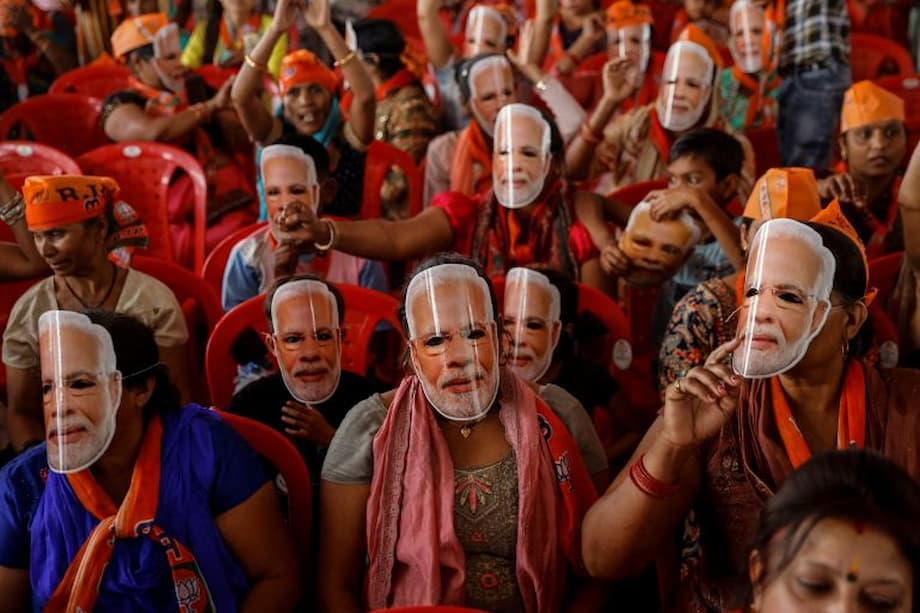A tragedy set the stage for a new test of online speech
On February 15, a stampede at the Kumbh Mela in Prayagraj left 18 people dead. Rescue and investigation efforts began immediately. At the same time, the Ministry of Railways moved against social media posts that criticized officials and questioned preparedness. The ministry used a government portal called Sahyog to send removal demands to companies like Meta and Google. Platforms that ignore these demands risk losing safe harbor, the legal shield that protects them from liability for user posts. That threat alone often prompts swift compliance.
- A tragedy set the stage for a new test of online speech
- How Sahyog works and who uses it
- The law behind the portal
- Orders are rising, and targets are wider than security threats
- Inside the X lawsuit
- How the government defends Sahyog
- Due process, transparency, and the critics
- What other platforms are doing
- Business and geopolitics in the background
- The Essentials
Until recently, only India’s Information Technology and Information and Broadcasting ministries sent most takedown orders. In October 2024, the government opened the Sahyog portal to a much wider set of authorities. Now, central and state departments, district administrations, and police units can all send removal demands to social networks, video platforms, and app stores. The stated reason is speed and coordination in the face of misinformation, hate speech, or content that could disturb public order.
Since Sahyog’s launch for content takedowns, officials have filed close to 300 demands that seek action on 3,465 URLs. Civil liberties groups and some technologists say this amounts to a sharp expansion of state power over online speech. At least 72 companies have joined the system, including Meta, Apple, LinkedIn, Google, Telegram, Snapchat, WhatsApp, and Instagram. One major holdout is X, which calls Sahyog a censorship portal and has taken the government to court.
How Sahyog works and who uses it
Sahyog is a centralized portal coordinated by the Indian Cyber Crime Coordination Centre (I4C) in the Home Ministry. It acts as a single interface where authorized officials submit a request, select a platform, and cite a legal basis. Platforms that enroll must designate a liaison to receive and act on notices inside the system. The portal was first developed during the COVID period to coordinate emergency responses. By late 2024, it was repurposed to manage online content removal at scale.
Officials can submit notices under different parts of Indian law. In practice, many orders are sent under Section 79(3)(b) of the Information Technology Act (IT Act), which links safe harbor to compliance with lawful orders. Platforms that do not comply risk losing immunity, which could expose them to criminal or civil action for user speech. Companies often comply even when a notice lacks detailed reasoning, critics say, because the costs of noncompliance in India can be high.
Both ruling and opposition states have used Sahyog. One request came from a district police official in Bihar who asked for the removal of posts that alleged corruption by a local officer. Others targeted satire, cartoons, or commentary on disaster response. Supporters say quick action prevents harm. Critics warn that without strong checks, lower level officials can erase speech that is embarrassing rather than unlawful.
The law behind the portal
Modern content control in India rests on two key provisions of the IT Act. Each creates different duties and safeguards. Understanding the gap between them explains why Sahyog alarms free speech advocates.
What Section 69A says
Section 69A allows the government to direct platforms to block content for reasons such as defense, sovereignty, or public order. The Supreme Court, in the Shreya Singhal ruling (2015), accepted 69A because it contains procedural checks. Orders must be written, reasons must be recorded, and a review committee examines the decision. Platforms and sometimes users get a chance to be heard. Those steps do not guarantee perfect outcomes, but they create a paper trail and the possibility of judicial review.
What Section 79(3)(b) allows
Section 79 sets up safe harbor for intermediaries. Platforms are not liable for user posts if they follow the law and remove illegal material upon receiving a valid government or court order. Section 79(3)(b) can be read to allow a government agency to ask a platform to take down content. The Shreya Singhal court narrowed the meaning of actual knowledge, steering platforms to act when they get a court or government order rather than on vague complaints. Sahyog sits in a gray area. It routes removal demands from a large number of officials under Section 79, while bypassing the written-order, reasoned-decision, and hearing steps that are required under Section 69A.
That split is why digital rights groups call Sahyog a parallel system. They argue it enables quick takedowns without the transparency and legal process that the top court said should accompany speech restrictions. The government counters that law enforcement needs a fast lane in urgent situations, and that platforms still have legal remedies if they believe an order is flawed.
Orders are rising, and targets are wider than security threats
Government takedown activity expanded over the last decade. Public reports showed 471 removal orders in 2014 and 6,775 in 2022. After that, detailed data became sparse, often citing national security exemptions. The arrival of Sahyog coincided with a further jump in activity, according to internal counts cited by rights groups and filings from platforms.
Spikes have followed periods of tension in Kashmir. During one such phase in April and May, the government ordered broad actions against accounts said to be linked to Pakistan. Journalists and news outlets, including Indian and international voices, were swept up as well. X reported executive directives to block more than 8,000 accounts, and said many notices lacked detailed justification.
Beyond social media, officials in the region banned 25 books, according to reports, including writings by Arundhati Roy and journalist Anuradha Bhasin. Critics say these steps, combined with wider use of Sahyog, narrow the space for dissent and reporting. Authorities insist that the targets include misinformation, incitement, and content that could inflame tensions.
Inside the X lawsuit
Elon Musk’s platform is fighting the system in court. X has refused to enroll in Sahyog and filed a petition in the Karnataka High Court arguing that the portal is unlawful. The company says that deputies across India can now issue takedown orders that bypass the due process safeguards attached to Section 69A. The tipping point, X says, came when the Railways asked it to remove hundreds of posts, including videos of a deadly crowd crush, following the Kumbh Mela chaos.
In its filings and public statements, X argues that many demands are unrelated to imminent threats. One example cited in press reports involves Satara police flagging a 2023 post that called a senior politician useless. Authorities warned it could spark communal tension. X left the post online and points to such cases to argue that criticism, satire, and reporting are being targeted under the banner of law and order.
In court documents, X describes the portal as a tool that pressures platforms to execute opaque orders with little recourse. The company has used a phrase that has since come to define its stance. After introducing its position before the bench, X said the following in filings that were widely reported:
X cannot be compelled to join Sahyog, which it considers a censorship portal.
How the government defends Sahyog
Officials say the portal is a practical response to harmful content at internet scale. They argue that the state must have the ability to curb misinformation, hate speech, child sexual abuse material, and content that incites violence. The Home Ministry and the IT Ministry say platforms are expected to follow orders issued by authorized officers, and that noncompliance raises accountability concerns. They add that company participation is widespread, a sign that the industry accepts the need for a reliable channel.
In hearings and statements, the government has framed its requests as limited and lawful. In one filing summarized by local media, the position was clear:
We are issuing notices against unlawful content, not blanket blocking orders.
Due process, transparency, and the critics
Lawyers, researchers, and civil society argue that Sahyog has drifted far beyond its original purpose. The London Story, a policy group that studied the system, says the portal began as an emergency coordination tool during the pandemic, then shifted into a content control engine without a clear statutory basis or parliamentary debate. Their paper describes numeric agency codes, bulk notices, and a lack of reasons or hearings. Lower rank officers can generate notices that land as official demands, with no internal appeal for users or platforms beyond a portal escalation.
The group’s assessment captures a central fear shared by many lawyers and digital rights organizations. After outlining the findings, the authors wrote:
Sahyog became a parallel censorship regime.
Technology lawyer Mishi Choudhary, along with the Software Freedom Law Center, has challenged the portal’s constitutionality. The Internet Freedom Foundation argues that the safe harbor structure is being used to pressure platforms into widespread content removal outside 69A’s safeguards. Advocates say that the combination of opacity and expanded authority invites mistakes and abuse. They want a mechanism that brings 79 notices in line with the Shreya Singhal standards for speech restrictions.
What other platforms are doing
Most global firms have joined Sahyog. Google, YouTube, Apple, Amazon, Microsoft, Meta, WhatsApp, Telegram, LinkedIn, and Snapchat were among those receiving notices through the portal. Data obtained through a Right to Information request showed 130 content notices issued via Sahyog to several large platforms between October 2024 and April 2025. These are separate from orders under Section 69A. Companies, for the most part, have not publicly challenged the system. Many are balancing compliance with local law against reputational risk and user trust.
X stands apart. It says it already maintains a legal request portal and should not be forced to enroll in a second government system. Even without joining, it still receives demands relayed through Sahyog. The company warns that losing safe harbor in India would expose it to lawsuits and criminal complaints for user posts. That risk helps explain why other firms, with larger operations and revenues in India, have stayed quiet and opted in.
Business and geopolitics in the background
The court fight runs alongside a delicate moment for US India tech ties. Elon Musk is pushing Starlink and Tesla toward India, with partnerships, showroom scouting, and hiring underway. Indian regulators are also probing X’s chatbot Grok for provocative replies that went viral. Analysts see room for negotiation, given the large market on one side and Musk’s influence and investments on the other. Meanwhile, New Delhi is exploring new media regulation ideas, including a potential council that could issue content orders across formats.
India is far from alone in trying to control content during crises. What makes Sahyog stand out is the scale of authorized senders and the limited visibility into who orders what and why. The stakes are high for speech, safety, and accountability. The courts will decide how far administrative convenience and rapid response can go before they collide with constitutional process and the right to criticize those in power.
The Essentials
- Sahyog lets a wide range of officials send content takedown demands directly to platforms
- Since October 2024, nearly 300 demands have targeted 3,465 URLs through the portal
- Orders often rely on Section 79(3)(b) of the IT Act, which lacks the procedural safeguards built into Section 69A
- At least 72 companies have joined Sahyog; X refused and sued in the Karnataka High Court
- X says officials are targeting criticism and satire; the government says it is acting against unlawful content
- Takedown activity in India has grown sharply since 2014, with data after 2022 limited by security exemptions
- During Kashmir tensions, orders sought blocks on thousands of accounts, including media and journalists
- Rights groups say Sahyog is a parallel censorship system with little transparency or recourse
- The outcome of X’s lawsuit could shape platform liability and speech protections in India
- Most large tech firms are complying, balancing legal risk in India with global trust and reputation
For detailed reporting and timelines, see coverage from outlets such as Al Jazeera and Reuters.




